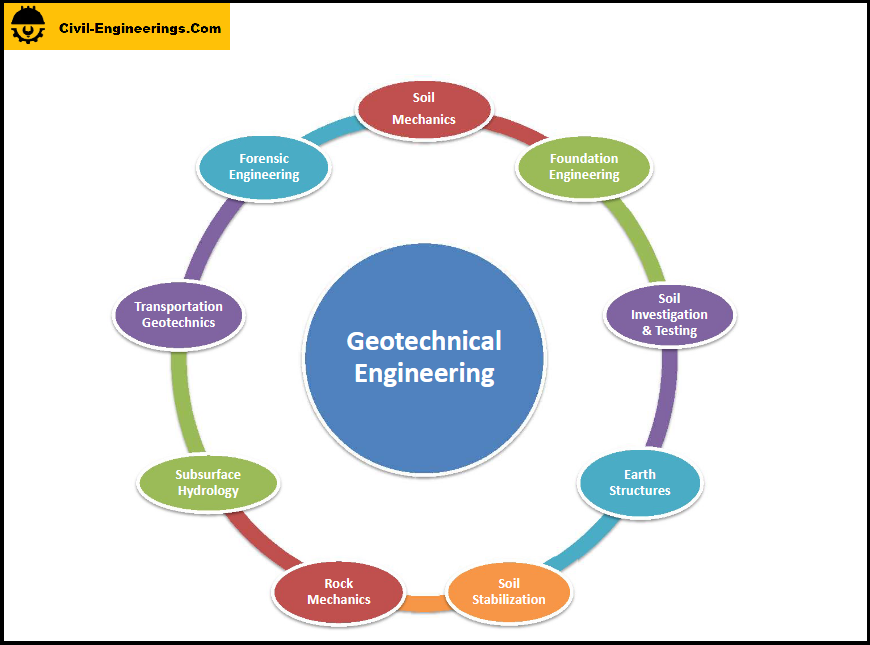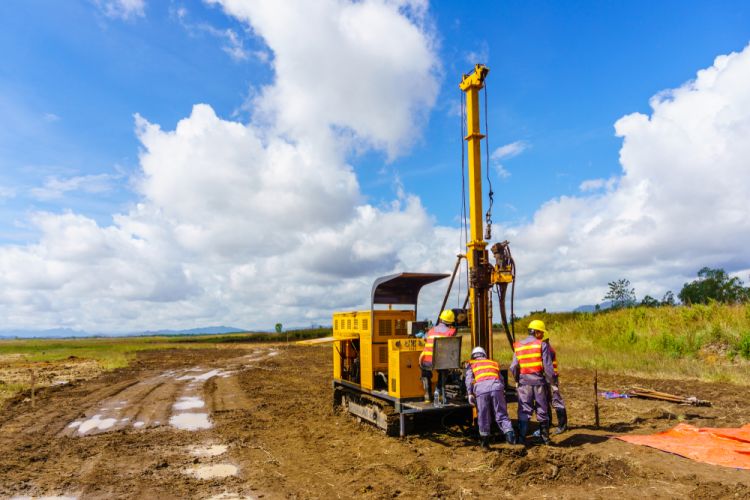The Basic Principles Of Geotechnical Engineering For Construction Projects
Table of ContentsThe 9-Second Trick For Geotechnical Engineering For Construction ProjectsSome Known Factual Statements About Geotechnical Engineering For Construction Projects See This Report on Geotechnical Engineering For Construction ProjectsGetting The Geotechnical Engineering For Construction Projects To WorkGeotechnical Engineering For Construction Projects Things To Know Before You Get ThisTop Guidelines Of Geotechnical Engineering For Construction Projects
These features have to be analyzed by geotechnical designers to anticipate their activities under various conditions., making this analysis essential., in addition to exactly how they communicate with buildings that have actually been erected on or within them, is one of the primary explanations for why geotechnical engineering is essential.
Ecological security is achieved with geotechnical engineering. Know-how in air, water, and dirt high quality maintenance is placed to use by geotechnical engineers to decrease the adverse results of jobs.
Infrastructure advancement, offshore engineering, passage construction, and deep structures. Risk-based layout and multidisciplinary groups. These components will certainly maintain the field advancing and ensure its ongoing relevance in the years to come. To sum up, geotechnical engineering is an essential discipline that preserves the durability and integrity of civil infrastructure. Geotechnical engineers add to making building projects reliable all over the world by understanding the behaviour of earth products and applying ideal preparation techniques.
See This Report about Geotechnical Engineering For Construction Projects
The fundamental stability of any job is necessary. Geotechnical engineering plays an important function in guaranteeing that frameworks are improved solid ground, actually and figuratively. By examining dirt, rock, and subsurface conditions, geotechnical engineers offer crucial understandings that aid in the style, building, and maintenance of structures and infrastructure.

The smart Trick of Geotechnical Engineering For Construction Projects That Nobody is Discussing
Lab testing: Identifying the residential or commercial properties of soil and rock. Numerous prominent building tasks have effectively utilized geotechnical design to ensure their security and safety and security.

As a leader in geotechnical engineering, BECC Inc. is dedicated to supplying ingenious and effective options that satisfy the highest possible criteria of top quality and security. For more details on just how BECC Inc. can sustain your next construction job, contact us today and allow us aid you construct on solid ground.
William Rankine, an engineer and physicist, established an alternative to Coulomb's planet pressure concept. Albert Atterberg developed the clay uniformity indices that are still used today for dirt classification. In 1885, Osborne Reynolds identified that shearing causes volumetric extension of thick products and contraction of loose granular materials. Modern geotechnical engineering is said to have begun in 1925 with the publication of Erdbaumechanik by Karl von Terzaghi, a mechanical engineer and rock hound.
Geotechnical Engineering For Construction Projects Can Be Fun For Everyone
Terzaghi also developed the framework for theories of birthing capacity of structures, and the concept for prediction of the price of settlement of clay layers due to consolidation. Afterwards, Maurice Biot fully created the three-dimensional soil consolidation concept, expanding the one-dimensional design previously created by Terzaghi to much more general theories and presenting the collection of basic equations of Poroelasticity.
Geotechnical designers explore and identify the residential or commercial properties of subsurface conditions and materials. They likewise make corresponding earthworks and maintaining frameworks, tunnels, and structure foundations, and may oversee Look At This and assess websites, which might better involve website tracking as well as the risk analysis and mitigation of all-natural threats - Geotechnical Engineering for Construction Projects. Geotechnical engineers and engineering geologists execute geotechnical examinations to obtain info on the physical residential properties of soil and rock hidden and beside a site to develop earthworks and structures for recommended structures and for the repair of distress to earthworks and frameworks created by click over here subsurface problems.
The Definitive Guide for Geotechnical Engineering For Construction Projects
Geologic mapping and analysis of geomorphology are normally finished in assessment with a geologist or engineering geologist. Subsurface exploration generally involves in-situ testing (for instance, the standard infiltration test and cone infiltration examination). The excavating of test pits and trenching (particularly for locating faults and slide aircrafts) might additionally be made use of to learn more about soil problems at depth. , which makes use of a thick-walled split spoon sampler, is the most typical method to gather disrupted samples.

If the interface in between the mass and the base of an incline has a complex geometry, slope stability evaluation is difficult and mathematical option methods are required. Generally, the user interface's precise geometry is unknown, and a simplified user interface geometry is assumed. Finite slopes need three-dimensional designs to be analyzed, so most slopes are analyzed presuming that they are considerably broad and can be stood for by two-dimensional versions.
The 8-Second Trick For Geotechnical Engineering For Construction Projects
The empirical technique might be called follows: General exploration sufficient to develop the harsh nature, pattern, and residential properties of deposits. Evaluation of one of the most potential problems and one of the most negative conceivable variances. Producing the layout based upon a functioning hypothesis of habits prepared for under one of the most likely problems. Option of quantities to be observed as building and construction proceeds and computing their expected worths based on the functioning hypothesis her explanation under one of the most undesirable conditions.
Dimension of amounts and evaluation of actual problems. Style alteration per actual conditions The empirical technique is appropriate for building that has actually currently started when an unexpected advancement happens or when a failing or mishap looms or has actually currently taken place. It disagrees for projects whose style can not be altered throughout building.